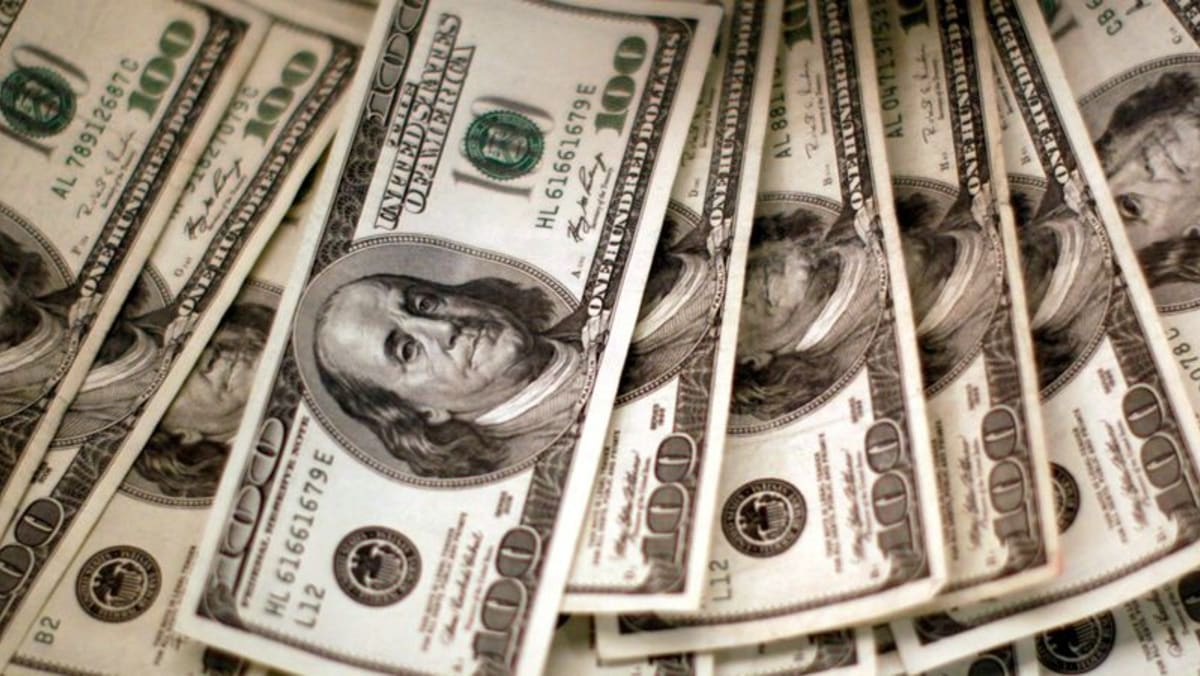Dollar teeters near one-year low; euro scales 17-month peak
SINGAPORE : The dollar wobbled near an over one-year low against its major peers on Tuesday, as investors awaited fresh catalysts to gauge if the greenback has further downside in the wake of last week’s cooler-than-expected U.S. inflation report.
The U.S. dollar index, which measures the greenback against a basket of six currencies, dipped slightly to 99.84 in early Asia trade, after having tumbled to its lowest since April 2022 on Friday.
The index also clocked its worst week of 2023 last week, after data showed U.S. inflation subsided further with consumer prices registering their smallest annual increase in more than two years, taking pressure off the Federal Reserve to continue raising interest rates.
“I think the dollar can stay under selling pressure,” said Carol Kong, a currency strategist at Commonwealth Bank of Australia. “Markets are focused on the end of the FOMC tightening cycle.”
Against the greenback, the euro hit a fresh 17-month high of $1.1256, while sterling gained 0.15 per cent to $1.3094, not far from last week’s top of $1.3144, also its highest since April 2022.
Money markets have largely priced in a 25-basis-point rate hike from the Fed at its policy meeting later this month, though see rates coming down as early as December.
Conversely, investors expect the European Central Bank and the Bank of England to have further to go in their rate-hike cycle.
Elsewhere, the Japanese yen rose marginally to 138.66 per dollar and remains more than 4 per cent clear of a seven-month low it hit last month.
The Bank of Japan (BOJ) holds its monetary policy meeting next week, with investors on the lookout for whether the central bank will start phasing out its ultra-dovish policy stance.
“More market participants have priced in chances of BOJ widening its yield curve control policy’s trading band by 25 bps in the next meeting,” said Ryota Abe, an economist at SMBC.
In other currencies, the Australian dollar pared some earlier gains after minutes of the Reserve Bank of Australia’s July policy meeting showed the decision to keep interest rates on hold came as policy was clearly restrictive.
The Aussie was last 0.07 per cent higher at $0.6821.
The New Zealand dollar was nursing losses from the previous session, rising 0.1 per cent to $0.6332.
The Antipodean currencies, often used as liquid proxies for the Chinese yuan, had dipped on Monday after China’s second quarter GDP data showed the world’s second largest economy growing at a frail pace as demand weakened at home and abroad.
The offshore yuan edged marginally higher to 7.1749 per dollar.
“Everyone is just waiting for the (Chinese) authorities to come out with concrete measures,” said Khoon Goh, head of Asia research at ANZ.
“The rhetoric coming out from the government has been, in a sense, saying they want to support growth, but I think for the markets, they actually want to see the follow up, concrete action, to back up those words.”
For all the latest business News Click Here

